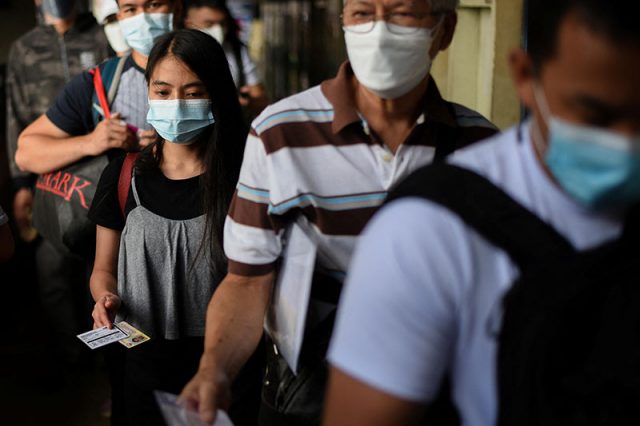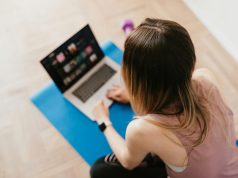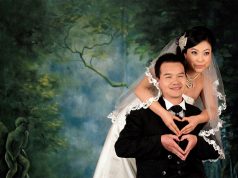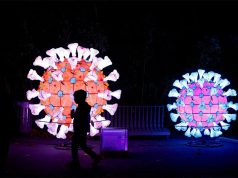
Reminders to continue masking indoors amid reports of the chief executive’s pending issuance to make it voluntary were made online as the country starts to deal with the presence of a more infectious subvariant and a recombinant variant.
Tourism Secretary Christina Frasco on Tuesday disclosed that President Ferdinand Marcos Jr will be issuing an executive order making face mask use voluntary indoors, with certain conditions.
She said that masking will continue in public transportation, in medical transportations like ambulances and medical facilities.
Indoor masking will also be “highly encouraged” for unvaccinated individuals, persons with comorbidities and senior citizens.
Frasco shared that the Marcos administration, in general, wants “to lift the remainder of travel restrictions into the Philippines” which she said includes easing the mask mandate.
It is “to allow our country to be at par with our ASEAN neighbors who have long liberalized their mask mandates,” she added.
In response to concerns relating to the Omicron subvariant XBB and recombinant XBC variant, Frasco said they are “not the very first variants” of the pandemic and that the health department has been “very aggressive” in its vaccination campaigns.
“We simply cannot go on in pandemic perspective because we have to give our country the opportunity to thrive while maintaining basic protocols and safeguarding and protecting livelihoods,” she added.
Last September, Marcos made outdoor mask-wearing voluntary.
‘Basic protection’
The Department of Health, in response to the developments, said it will “await the official guidance that will be issued by the Malacañang.”
“While the DOH has illustrated all potential scenarios to the IATF during discussions concerning masking mandates, the IATF is a collegial body that takes into consideration the concerns of all sectors,” it said in a statement.
“In view of this, the DOH reminds the public that the more layers of protection we employ, the more protected we are against COVID-19. These include vaccination, masking, distancing, ventilation, and sanitation, as well as taking care of one’s health,” the agency added.
“Moreover, the decision to ease masking empowers each and every one of us by giving us the choice to decide based on our personal content and risk appetite,” it further said.
“With this freedom to choose, it is therefore important for us to assess our individual risk thoroughly before deciding if it is safe and wise to remove our masks, especially now that the Undas and Christmas seasons are approaching and we expect increased COVID-19 transmission brought about by greater mobility,” the DOH said.
Some Filipinos also appealed to their fellow citizens to continue masking, especially amid the presence of the more infectious Omicron subvariant XBB and the recombinant XBC variant.
“What’s happening?” physician Tony Leachon, former special adviser to the National Task Force Against COVID-19, tweeted.
“Ex PNP chief as DOH USEC. Now, DOT Sec. Cristina Frasco making the announcement instead of a DOH Sec. which the President has yet to appoint. Chaos. Wear face masks. Boost up,” he added.
“Wear a mask. Still,” physician Gia Sison wrote in response to the reports.
“I will continue wearing a mask because Metro Manila’s air is polluted, people outside would just cough/sneeze without covering their mouths, it helps with privacy, it reduces the chance that I get sick, and [COVID-19] is airborne,” statistician Peter Cayton said.
“I dunno but I’ll still keep my mask on. Kakagaling ko lang sa Covid around 2 weeks ago and It’s not fun. Kapag nag-surge, good luck na lang sa inyo,” wrote another Twitter user.
“The virus is in the air. Mask is basic protection required to prevent inhaling it,” wind engineer Joshua Agar tweeted.
He also commented that the would-be policy shows “evidence of poor understanding of public health [and] evidence of apathy towards the vulnerable, whether physically or socio-economically, amidst the pandemic.”
Others who have comorbidities also expressed concern about the development. They are more prone to developing severe illnesses if infected by COVID-19, along with the elderly.
“As someone with a chronic autoimmune disorder, this is alarming,” a Twitter user said.
Those who claimed of just recently getting infected or knowing someone who got the virus also reacted to the reports.
“Two people in my inner circle got [COVID-19] just mere 3 weeks ago, and lately, we’re beginning to feel the Christmas Rush with all the traffic and the bazaars,” history researcher Kristoffer Pasion said.
“Not a good idea. I got [Covid] last month dahil hindi ako nag-mask sa isang indoor area full of people,” theater performer Karl Navato wrote.
When Marcos eased the mask mandate outdoors before, the DOH emphasized that masking remains a safer option.
Need to mask up
COVID-19 is an airborne viral disease that can be spread through respiratory droplets or aerosols containing viral particles.
These are released when people breathe, sing, speak, exercise, cough and sneeze, among others.
The virus can remain suspended in the air for hours in poorly ventilated and enclosed spaces such as air-conditioned rooms.
To prevent infections, the World Health Organization said that well-fitting face masks are crucial, along with handwashing, physical distancing and observing good ventilation in environments.
John Hopkins Medicine also highlighted the significance of masks, noting that there are people who might be infected but are just asymptomatic.
“Many people who have COVID-19 don’t show symptoms but can still spread the virus through droplets that escape from the mouth when speaking, sneezing and coughing. Scientists have proven that masking lowers COVID-19 cases, even in the long term,” it said on its website.
Researchers from Stanford Medicine and Yale University also found that there were significantly fewer COVID-19 cases in communities with surgical masks compared to those without one.
Threats of new subvariant, variant
The WHO said that the Omicron XBB appeared to be “the most antibody-evasive” version of the virus so far, citing preliminary laboratory-based evidence.
In Singapore, the subvariant grew from 22% to 54% of the total COVID-19 cases within a week.
A report cited a pre-print study from China which described Omicron XBB as “far exceeding [Omicron] BA.5 and approaching SARS-CoV-1 level.”
SARS-CoV-1 is the strain of the coronavirus that causes SARS, a respiratory virus that caused severe illness from 2002 to 2004.
Meanwhile, the XBC variant is under monitoring and investigation by the United Kingdom Health Security Agency, although WHO has yet to determine its risk.
OCTA Research Fellow Guido David said that the variant “could be a concern” since it is a recombinant of Delta and the Omicron subvariant BA.2.
“If we recall, the Delta variant produced more death and hospitalization,” he said before.
According to the DOH, the Delta variant continues to cause the most severe and critical cases of COVID-19 in the country.









